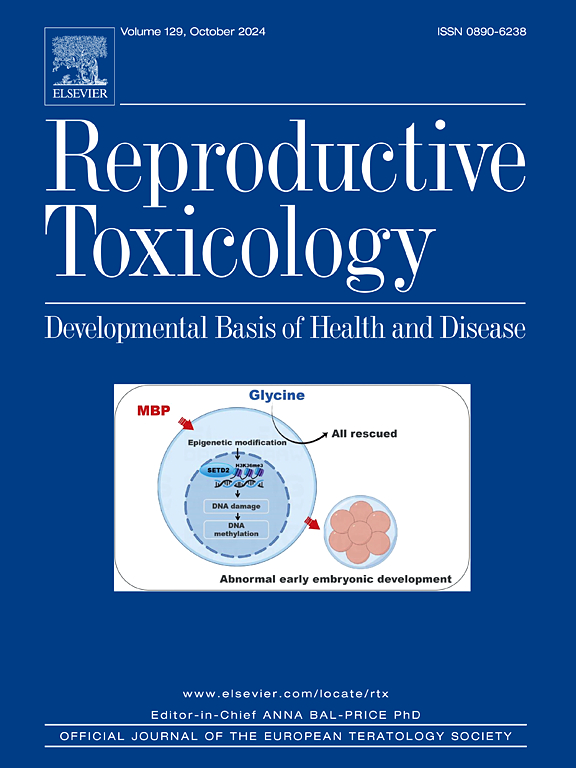TERT's protective effect on trophoblast cells: Reducing mitochondrial ROS
IF 3.3
4区 医学
Q2 REPRODUCTIVE BIOLOGY
引用次数: 0
Abstract
Objective
The principal objective of this project is to elucidate the ameliorating function of telomerase reverse transcriptase (TERT) on placental trophoblast dysfunction and its associated mitochondrial dysfunction.
Methods
We utilised 50 μM hydrogen peroxide (H2O2) to induce an oxidative stress model in HTR-8/SVneo cells (NC group and OS group), subsequently establishing three experimental conditions via lentiviral transfection: untreated controls (Con group), TERT-overexpressing cells (OE group), and empty vector-transfected negative cells (Neg group). In order to explore the role of mitochondrial TERT, we employed the Src kinase familyinhibitor PP1 (4-Amino-5-(4-methylphenyl)-7-(t-butyl)pyrazolo[3,4-d]pyrimidine), a cell-permeable small molecule specifically blocking the translocation of TERT in HTR-8/SVneo cells with overexpressed TERT. We established four experimental conditions: untreated overexpression group (OE group), H2O2-stimulated group (OS group), co-treatment group of H2O2 and PP1 (PP1 OS group), and PP1 treatment group alone (PP1 group). The expression and localization of TERT were analysed via qRT-PCR, immunofluorescence, and Western blotting. In addition, the cellular functions (viability, migration, invasion) were assessed using CCK-8, Calcein AM/PI staining, wound healing assay and Transwell assay. Mitochondrial integrity was thoroughly assessed using a mitochondrial membrane potential assay, an ATP content assay, a mtDNA copy number quantification and a mitochondrial morphology assay.
Results
The OE group demonstrated significantly reduced reactive oxygen species (ROS) levels compared to Con and Neg groups, accompanied by enhanced cellular viability and improved migratory and invasive capacities. Mitochondrial functional analyses revealed superior outcomes in the OE group, including stabilized mitochondrial membrane potential and ATP production, maintained mtDNA copy numbers, and preserved mitochondrial ultrastructure. Conversely, pharmacological inhibition with PP1 - a Src kinase family inhibitor that blocks TERT mitochondrial translocation - effectively abolished these protective effects. PP1-treated cells exhibited exacerbated oxidative stress, impaired cell viability, and diminished motility, confirming the essential role of mitochondrial-localized TERT in cellular homeostasis.
Conclusions
Elevated mitochondrial TERT levels were able to effectively mitigate the cellular functional damage induced by elevated ROS levels by maintaining mitochondrial stability. The above findings provide a theoretical basis for the development of intervention strategies for pregnancy-related disorders based on the regulation of mitochondrial TERT function.
TERT对滋养细胞的保护作用:减少线粒体ROS
目的探讨端粒酶(TERT)对胎盘滋养细胞功能障碍及其相关线粒体功能障碍的改善作用。方法采用50 μM过氧化氢(H2O2)诱导HTR-8/SVneo细胞(NC组和OS组)氧化应激模型,随后通过慢病毒转染建立3种实验条件:未处理对照组(Con组)、过表达tert的细胞(OE组)和空载体转染阴性细胞(Neg组)。为了探索线粒体TERT的作用,我们使用了Src激酶家族抑制剂PP1(4-氨基-5-(4-甲基苯基)-7-(t-丁基)吡唑[3,4-d]嘧啶),这是一种细胞渗透性小分子,可特异性阻断TERT过表达的HTR-8/SVneo细胞中TERT的易位。我们建立了4个实验条件:未处理过表达组(OE组)、H2O2刺激组(OS组)、H2O2与PP1共处理组(PP1 OS组)、PP1单独处理组(PP1组)。通过qRT-PCR、免疫荧光和Western blotting分析TERT的表达和定位。此外,采用CCK-8、钙黄蛋白AM/PI染色、伤口愈合实验和Transwell实验评估细胞功能(活力、迁移、侵袭)。使用线粒体膜电位测定、ATP含量测定、mtDNA拷贝数定量和线粒体形态测定彻底评估线粒体完整性。结果与对照组和阴性组相比,OE组的活性氧(ROS)水平显著降低,细胞活力增强,迁移和侵袭能力增强。线粒体功能分析显示,OE组的结果更优越,包括稳定了线粒体膜电位和ATP的产生,维持了mtDNA拷贝数,并保留了线粒体超微结构。相反,PP1(一种阻断TERT线粒体易位的Src激酶家族抑制剂)的药理学抑制有效地消除了这些保护作用。pp1处理的细胞表现出氧化应激加剧、细胞活力受损和运动能力下降,证实了线粒体定位的TERT在细胞稳态中的重要作用。结论线粒体TERT水平升高可通过维持线粒体稳定性,有效减轻ROS水平升高引起的细胞功能损伤。上述发现为制定基于线粒体TERT功能调控的妊娠相关疾病干预策略提供了理论依据。
本文章由计算机程序翻译,如有差异,请以英文原文为准。
求助全文
约1分钟内获得全文
求助全文
来源期刊

Reproductive toxicology
生物-毒理学
CiteScore
6.50
自引率
3.00%
发文量
131
审稿时长
45 days
期刊介绍:
Drawing from a large number of disciplines, Reproductive Toxicology publishes timely, original research on the influence of chemical and physical agents on reproduction. Written by and for obstetricians, pediatricians, embryologists, teratologists, geneticists, toxicologists, andrologists, and others interested in detecting potential reproductive hazards, the journal is a forum for communication among researchers and practitioners. Articles focus on the application of in vitro, animal and clinical research to the practice of clinical medicine.
All aspects of reproduction are within the scope of Reproductive Toxicology, including the formation and maturation of male and female gametes, sexual function, the events surrounding the fusion of gametes and the development of the fertilized ovum, nourishment and transport of the conceptus within the genital tract, implantation, embryogenesis, intrauterine growth, placentation and placental function, parturition, lactation and neonatal survival. Adverse reproductive effects in males will be considered as significant as adverse effects occurring in females. To provide a balanced presentation of approaches, equal emphasis will be given to clinical and animal or in vitro work. Typical end points that will be studied by contributors include infertility, sexual dysfunction, spontaneous abortion, malformations, abnormal histogenesis, stillbirth, intrauterine growth retardation, prematurity, behavioral abnormalities, and perinatal mortality.
 求助内容:
求助内容: 应助结果提醒方式:
应助结果提醒方式:


